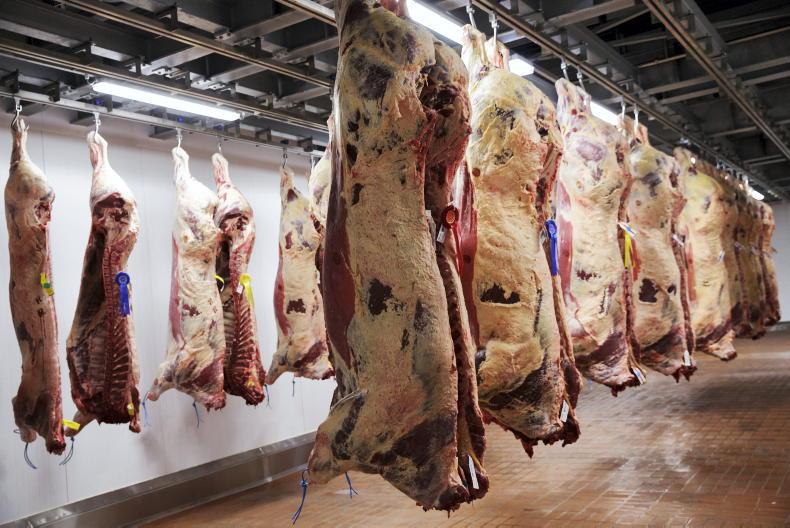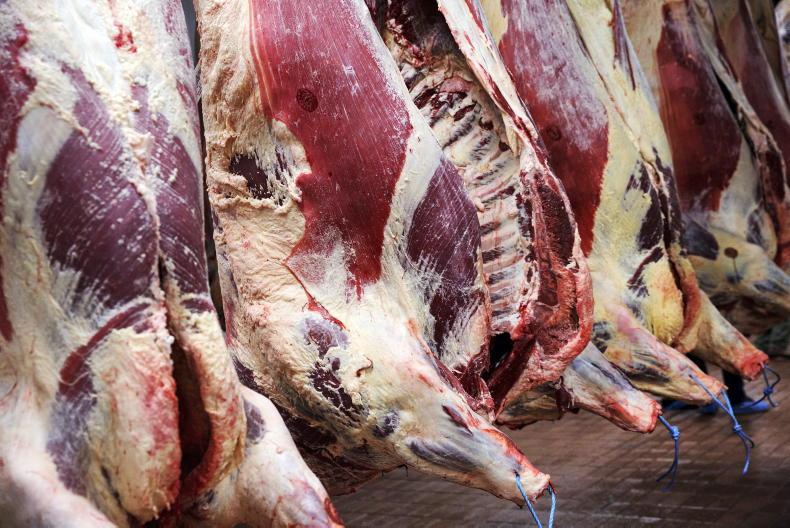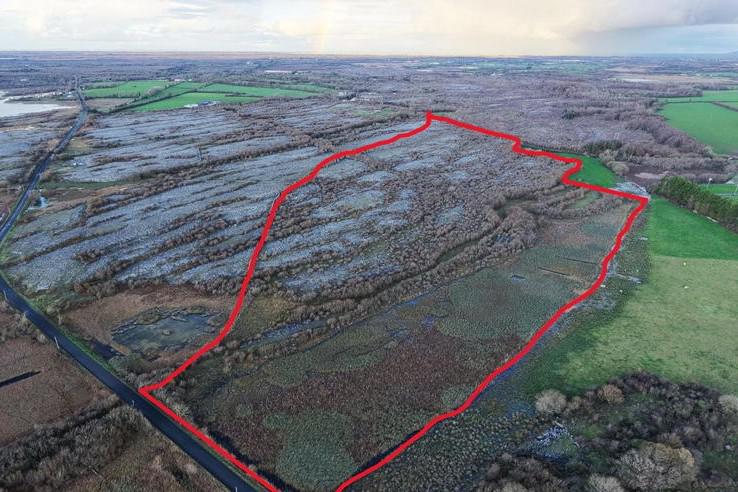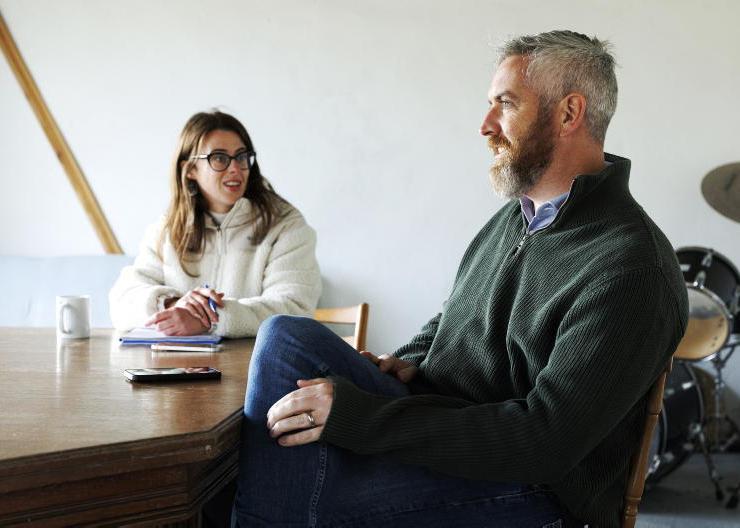Almost €450,000 is to be invested in mapping and researching Ireland’s high nature value (HNV) farmland and forestry.
Dr James Moran, lecturer in ecology and biology at Galway-Mayo Institute of Technology, will lead the three-year project, which was granted Department of Agriculture funding last Thursday.
The aim is to characterise and map the country’s HNV farmland and forestry. It is expected to help with the planning of Ireland’s schemes for the next CAP, Dr Moran told the Irish Farmers Journal.
“So much is expected from farmers now in terms of the quantity and quality of the food they produce, as well as the environmental demands and public goods they provide,” he said.
If we can characterise the range and type of this HNV farmland and forestry, we can use it to better advise and incentivise farmers in those areas
“But not all land can be all things to all people. Some land is very productive for growing vegetables, cereals and beef, while other land, which would be considered marginal for food production, could be very productive from a biodiversity, carbon sink or landscape or water quality point of view.”
Around 30% of Ireland’s farmland is estimated to be HNV.
“If we can characterise the range and type of this HNV farmland and forestry, we can use it to better advise and incentivise farmers in those areas,” he explained.
Ultimately, the project will map the different quantities and quality of HNV farmland and forestry across the country.
Farmers in those areas could move towards carbon farming, farming for nature and diversify into things like having eco labelling for their food
This could be used to identify what land is suitable for new incentives and opportunities, Moran said.
“Farmers in those areas could move towards carbon farming, farming for nature and diversify into things like having eco labelling for their food,” said Dr Moran.
“HNV land could be a huge selling point for Ireland and Irish beef,” he said. “When you see Irish and Brazilian beef prices on a par, that says it all. We should be diversifying away from the commodity approach and prices, we should be differentiating our product.”
Case study: €74/kg for
wildlife-friendly beef
Farm Wilder is a social enterprise based in Devon, England, that promotes food from Britain’s most wildlife-friendly and sustainable farms that contain cuckoos, hedgehogs, bees and butterflies.
Farmers in the project are working with conservation charities to improve habitats for Marsh Fritillary butterflies, cuckoos and other endangered species.
Belted Galloway, Welsh Black, Highland, South Devon and North Devon Ruby Red cattle are certified as grass-fed and reared on farms that have a lower carbon footprint, healthier soils, higher biodiversity and no need for artificial fertilisers.
They mainly graze upland pastures that are richer in wildflowers and then finished off grass on lowland farms.
The beef commands a serious price premium.
The cheapest Wildlife Friendly minced beef sells for £8.40/kg (€10.07/kg), while wildlife-friendly dry-aged fillet steak is priced at £62.21/kg (€74.58/kg).
Almost €450,000 is to be invested in mapping and researching Ireland’s high nature value (HNV) farmland and forestry.
Dr James Moran, lecturer in ecology and biology at Galway-Mayo Institute of Technology, will lead the three-year project, which was granted Department of Agriculture funding last Thursday.
The aim is to characterise and map the country’s HNV farmland and forestry. It is expected to help with the planning of Ireland’s schemes for the next CAP, Dr Moran told the Irish Farmers Journal.
“So much is expected from farmers now in terms of the quantity and quality of the food they produce, as well as the environmental demands and public goods they provide,” he said.
If we can characterise the range and type of this HNV farmland and forestry, we can use it to better advise and incentivise farmers in those areas
“But not all land can be all things to all people. Some land is very productive for growing vegetables, cereals and beef, while other land, which would be considered marginal for food production, could be very productive from a biodiversity, carbon sink or landscape or water quality point of view.”
Around 30% of Ireland’s farmland is estimated to be HNV.
“If we can characterise the range and type of this HNV farmland and forestry, we can use it to better advise and incentivise farmers in those areas,” he explained.
Ultimately, the project will map the different quantities and quality of HNV farmland and forestry across the country.
Farmers in those areas could move towards carbon farming, farming for nature and diversify into things like having eco labelling for their food
This could be used to identify what land is suitable for new incentives and opportunities, Moran said.
“Farmers in those areas could move towards carbon farming, farming for nature and diversify into things like having eco labelling for their food,” said Dr Moran.
“HNV land could be a huge selling point for Ireland and Irish beef,” he said. “When you see Irish and Brazilian beef prices on a par, that says it all. We should be diversifying away from the commodity approach and prices, we should be differentiating our product.”
Case study: €74/kg for
wildlife-friendly beef
Farm Wilder is a social enterprise based in Devon, England, that promotes food from Britain’s most wildlife-friendly and sustainable farms that contain cuckoos, hedgehogs, bees and butterflies.
Farmers in the project are working with conservation charities to improve habitats for Marsh Fritillary butterflies, cuckoos and other endangered species.
Belted Galloway, Welsh Black, Highland, South Devon and North Devon Ruby Red cattle are certified as grass-fed and reared on farms that have a lower carbon footprint, healthier soils, higher biodiversity and no need for artificial fertilisers.
They mainly graze upland pastures that are richer in wildflowers and then finished off grass on lowland farms.
The beef commands a serious price premium.
The cheapest Wildlife Friendly minced beef sells for £8.40/kg (€10.07/kg), while wildlife-friendly dry-aged fillet steak is priced at £62.21/kg (€74.58/kg).










SHARING OPTIONS